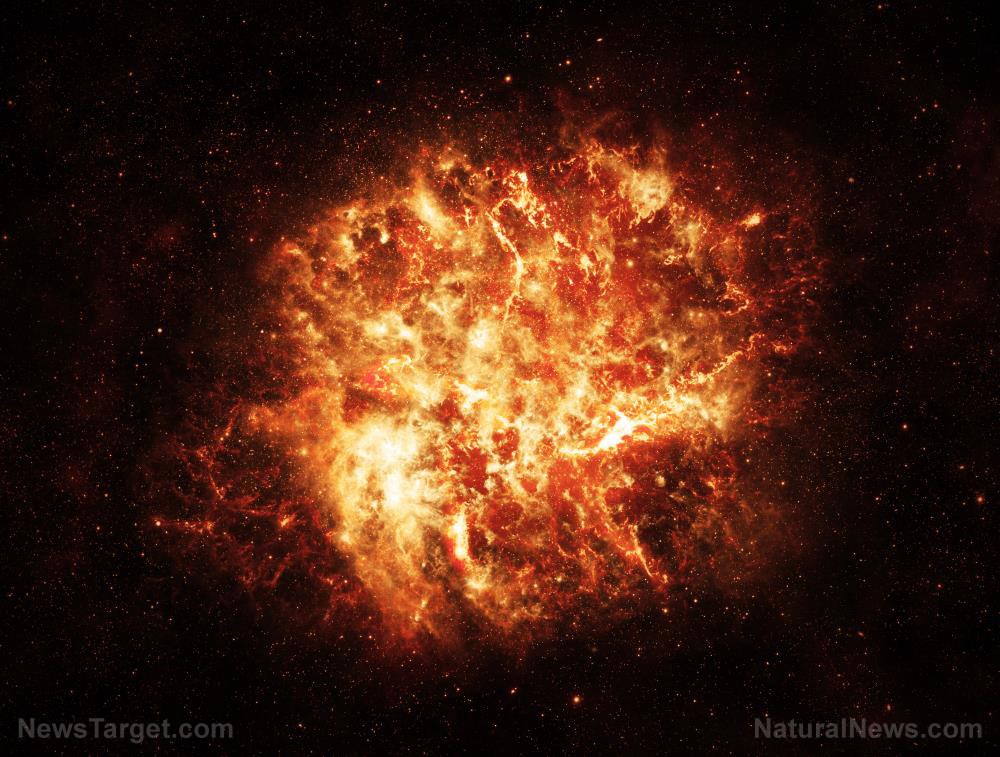A closer look at the voids between galaxies: What’s going on in intergalactic space?
09/09/2020 / By Franz Walker

People tend to think of space as just an empty void in between galaxies, stars, planets and other celestial bodies. This “void,” however, actually contains more matter than the galaxies themselves.
In between galaxies exists a matter called the intergalactic medium (IGM). This matter – composed mostly of hot, ionized hydrogen, with bits of heavier elements such as carbon, oxygen and silicon thrown in – seemingly exists in only trace amounts in outer space, but when added up actually represents a significant amount of the matter in space.
The matter in between galaxies
IGM was discovered in the 1960s when astronomers noticed that light from quasars – incredibly bright and active galaxies in the distant universe – had missing pieces. The scientists surmised that these missing pieces had been absorbed by something between the quasars and the scientists’ telescopes. This matter that was absorbing the light was the IGM.
Following the discovery of IGM, astronomers have since discovered vast webs and filaments of gas and heavy elements that, when put together, contain more matter than all the galaxies combined.
“If you took a cubic meter, there would be less than one atom in it,” said Michael Shull, an astronomer at the University of Colorado Boulder, in an interview with Live Science. “But when you add it all up, it’s somewhere between 50 and 80 percent of all the ordinary matter out there.”
Scientists believe that most of the gas that comprises the IGM was likely left behind from the Big Bang. The heavier elements in it, however, hint that at least some of it comes from old stardust, spewed out by galaxies.
As the universe continues to expand, the IGM in the most remote regions will be eternally isolated from neighboring galaxies; however, the IGM that’s closer to galaxies plays an important role in the lives of these galaxies.
IGM under the influence of a galaxies gravitational pull slowly gets pulled into the galaxy at the rate of about one solar mass – equivalent to the mass of our sun – per year. This matches the rate of star formation in the disk of our own Milky Way galaxy.
“IGM is the gas that feeds star formation in galaxies,” explained Shull. “If we didn’t still have gas falling in, being pulled in by gravity, star formation would slowly grind to a halt as the gas [in the galaxy] gets used up.” (Related: Interstellar space is filled with “toxic grease” that would make future space travel very difficult, say researchers.)
Studying the space between galaxies
With the role that the IGM plays in star formation, scientists are looking to learn more about it. To do this, astronomers are once again turning to distant galaxies. This time, they’re looking at fast radio bursts from these galaxies as on top of light from quasars to study the characteristics of IGM and determine its varying temperatures and densities.
“By measuring the temperature of the gas, you can get a clue as to its origins,” said Shull. “It allows us to know how it got heated and how it got there.”
In the meantime, IGM isn’t the only thing that scientists have found that exists in the space between galaxies. Astronomers have also discovered stars in this void.
Called intergalactic or rogue stars, these stars are thought to have been ejected from their birth galaxies, either by black holes or collisions with other galaxies.
While initially thought to be quite rare, some scientists are now starting to think that these intergalactic stars are much more common than previously thought.
A recent study, published in the journal Science postulated that much of the starlight that we receive actually comes from outside galaxies.
“Our results with the Cosmic Infrared Background Experiment suggest that as much as half of the light from stars is sourced by stars outside of galaxies,” stated lead author Michael Zemcov, an astronomer at the Rochester Institute of Technology. “But I would say that’s not currently a widely accepted view.”
Still, other studies are showing that there are more intergalactic stars than previously thought. An earlier, 2012 study, published in The Astrophysical Journal, reported that there were around 650 of these stars at the edge of the Milky Way. The same study also estimated that there could be trillions more of these stars out there.
Visit Space.news for more on discoveries that are changing our view of the space between galaxies.
Sources include:
ArXiv.org [PDF]
IOPScience.IOP.org [PDF]
Tagged Under: astronomy, cosmic, galaxy, intergalactic medium, Milky Way, outer space, research, Space, star formation, Stars, Universe
RECENT NEWS & ARTICLES
COPYRIGHT © 2017 REAL SCIENCE NEWS




















